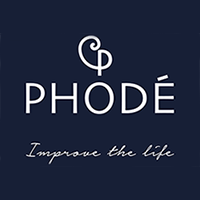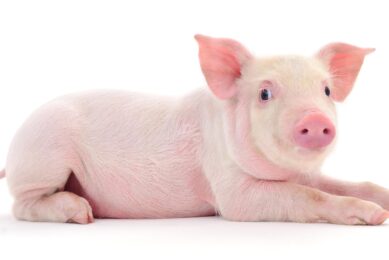Heat stress in sows: how to cope with it?
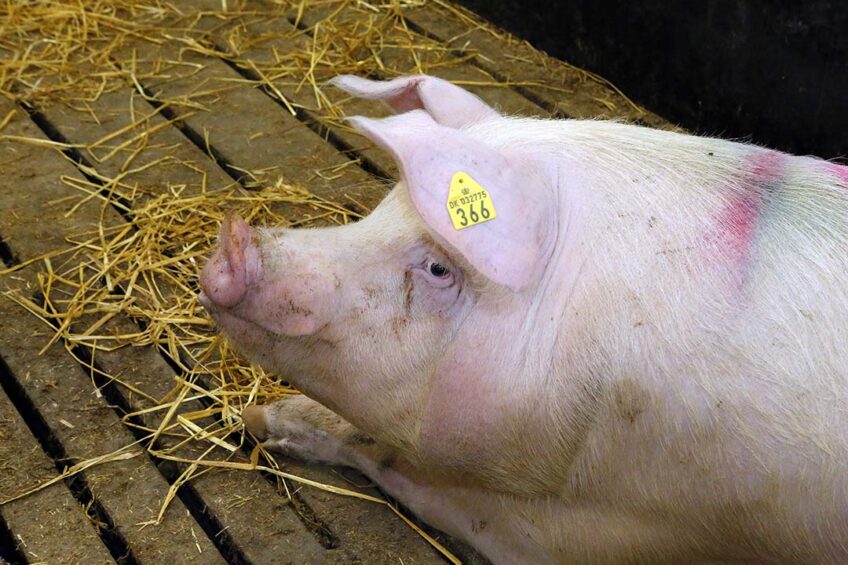
Heat stress is a major problem in sows. In this article, we propose to define heat stress, to explain the impact on sows and finally to bring solutions to counteract its negative consequences.
What is heat stress in swine?
Heat stress occurs when the environmental temperature is higher than the thermal neutral zone of the animal. The animal is producing more heat from its metabolism, or receiving more heat from its environment, than it is transferring from its body to the environment.
To determine the heat stress zone, not only temperature matters but also humidity.
The heat stress situation has been classified in 4 classes: normal, alert, danger and emergency. Above 25°C, animals are in alert stage, negative impacts are observed as metabolism starts to fight against heat stress. Depending on the body size of the animals, we observe a variation in the thermal neutral zone and critical temperature.
Studies have shown that the sow’s thermal neutral zone is at 18°C at 50% of which is much lower compared to fatteners. Its capacity to release heat stress is limited by the size of its lungs. Most of the heat stress studies are focusing on lactating sows. Thus, lactating sows have to eat a big amount of feed per day which increases the heat production. Suckling piglets however have a thermal neutral zone between 27 to 30°C, which obliges farmers to maintain the maternity between 21 and 25°C with heated nests. Consequently, heat stress in lactating sow is a massive problem to be addressed!
What about gestating sows?
Nevertheless, heat stress also has a negative impact on gestating sows with wider consequences on their offspring. Moreover, depending on the period of gestation, effects are different. Lucy and Safranski, 2017 report that heat stress at early gestation increased embryo mortality which affect farrowing rate and litter size at birth. Whereas late heat stress increases the number of stillborn piglet.
How do sows keep cool?
A pig does not have functional sweat glands to release heat. First thing that sows will do to fight heat stress is to adapt their behaviour: lie down on the floor, reduce their activities. Most of the time a change in feeding behaviour is observed, lactating sows will concentrate their feeding early in the morning and late in the evening. Gestating sows will not necessarily change their feeding behaviour as they are in a restricted feeding system but they spend more time lying sleeping. A sow will also increase its respiration rate to release the heat outside the body and bring fresh air inside. A study conducted on lactating sows showed that panting increases quickly above 22°C. Another one, conducted on gestating sows, highlights that respiration rate rises progressively over the weeks of gestation until it reaches a plateau (around 8 weeks of gestation; Lucy and Safranski, 2017) showing the maximum capacity of the sows to adapt to heat stress.
What are the consequences of heat stress?
In lactating sows, once the animal is in a heat stress situation, a message is sent to the brain to reduce the appetite and, consequently, feed intake (Figure 1).
Figure 1- consequences of temperature increase on lactating sows’ metabolism (from Quiniou et al, 2000).
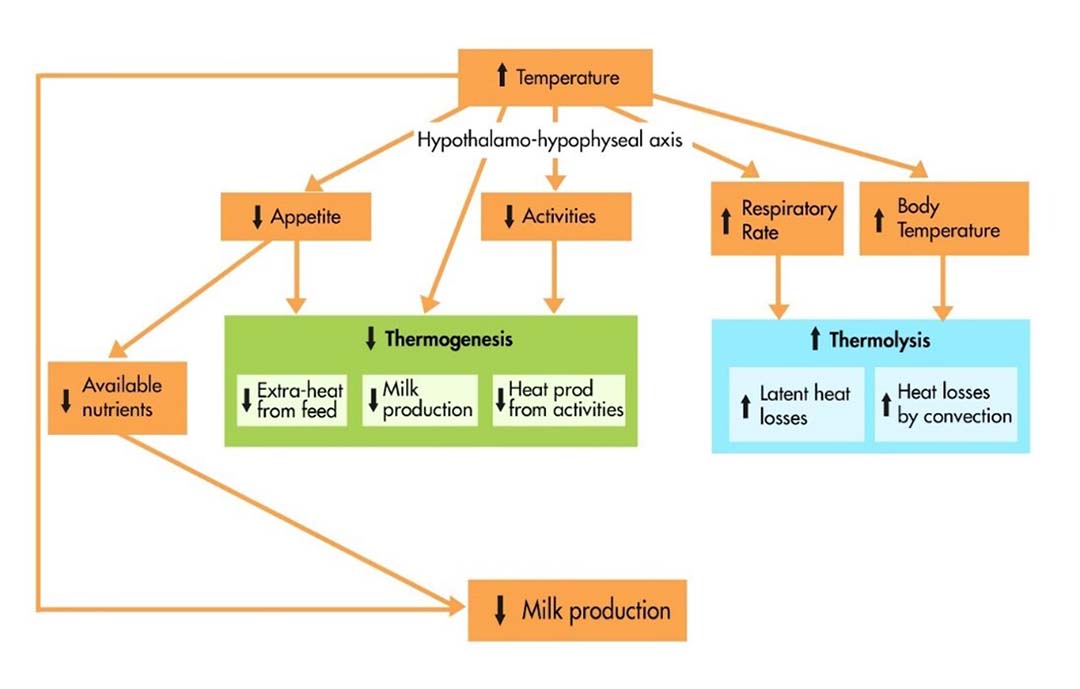
In gestating sows, respiration rate and body temperature both increase to allow the peripheral vasodilation of blood vessels. Blood flow is redirected to skin at the expense of abdomen and uterus. Direct consequences are observed on fetal weight and piglets birth weight.
In a nutshell, the impact of heat stress on lactating sows is:
From 18 to 29°C, milk production drops by between 12 to 26%, with a decrease of average litter weight gain of 300 to 750 g/day
An increase of backfat losses between 1.2 to 1.4 mm, negatively impacting the reproduction performance.
In gestating sows, heat stress has wider effects (Figure 2, from Lucy and Safranski, 2017):
Earlier farrowing: -1.5 days (115.7+/-0.5 vs 117.4+/-0.5 d)
An increase of stillborn
Direct impact on litter performance: -16% on piglet birth weight (Body Weight 1180 +/- 50 g vs 1409 +/- 59 g) (Lucy and Safranski, 2017).
And on offspring:
Lower Body Weight at slaughterhouse
Greater fat deposit
Figure 2- summary of the effects of gestation heat stress on the pregnant sow and her offspring (from Lucy and Safranski, 2017).
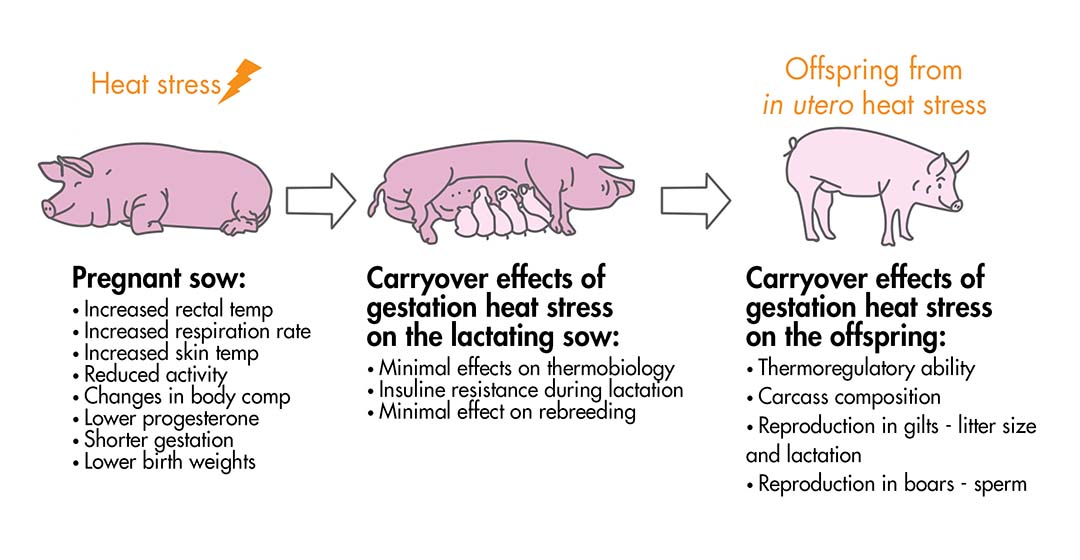
What are the solutions to fight heat stress?
To fight heat stress and support your sows, two complementary actions can easily be done:
Reducing heat stress by providing a proper sow comfort
Improving animal resilience by improving its adaptation to heat stress situations.
Focusing on the second action, the addition of a specific Citrus Sinensis-based solution allows your animals to better adapt to heat stress and consequently maintain a normal behaviour such as water and feed intake.
This solution has been included in the feeding strategy on a commercial farm located in a temperate country. Gestation and lactation sows received the solution and for an entire year. Significant benefits have been observed on total born alive piglets (+0.5/litter) and litter weight gain at weaning (+5.37 kg/litter) (Table 1).
Table 1- Litter performance with sows under heat stress conditions.
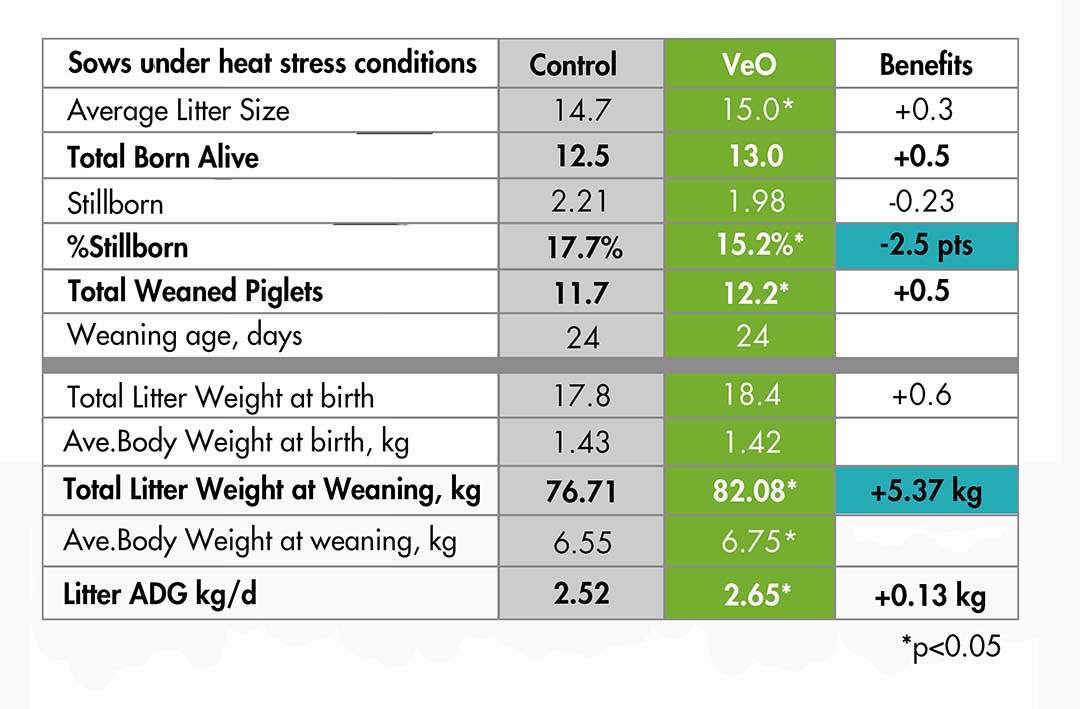
As direct consequences, reproduction parameters have been significantly improved. Weaning to estrus interval has been reduced by 0.2 days, fertility rate gained 4 points from 89% to 93% and finally farrowing rate rose from 85% to 90% (p<0.05).
To conclude, in temperate countries and even more in tropical countries heat stress has long term effects on sows’ career and also on their offspring. Having a specific solution acting at the brain level of the animal is key to answer individual requirements. Indeed, let’s keep in mind that stress is a matter of perception. It is possible to let sows see the glass as half full!
References are available on request.


